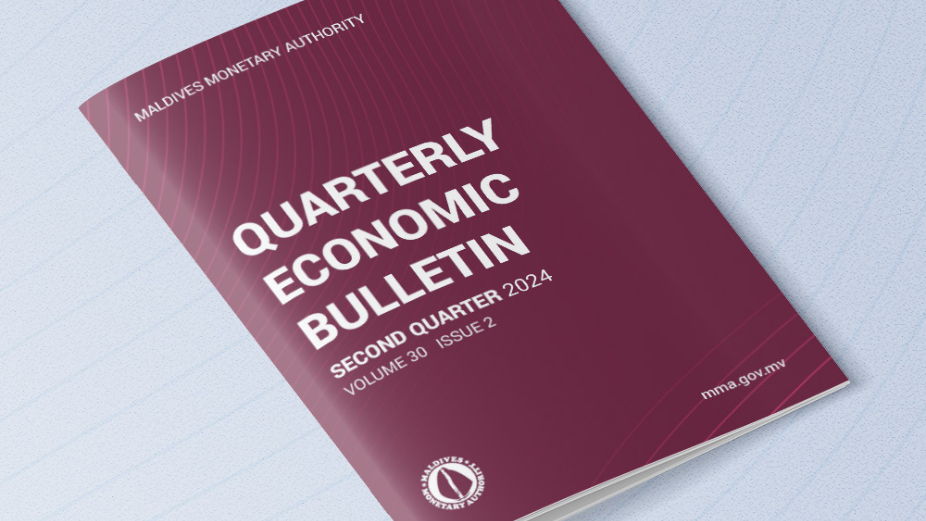
The Maldives Monetary Authority (MMA) has released its Quarterly Economic Bulletin for Q2-2024, highlighting growing inflation concerns alongside a slowdown in economic growth. The latest data reveals that inflation is set to rise significantly in the coming months, while the broader economic landscape continues to show resilience, particularly in the tourism sector.
Inflation Trends and Projections
Inflation in the Maldives remained low in Q2-2024, with the Consumer Price Index (CPI) increasing by just 0.3%, down from 0.6% in the previous quarter. This moderation was largely driven by reduced energy prices, aided by government-led Ramadan discounts on electricity bills. Despite this, food inflation remains a pressing issue, with significant rises in the cost of fish and vegetables.
Looking ahead, inflation is projected to surge in Q4-2024, reaching 7.3% due to anticipated subsidy reforms affecting staple foods and electricity. Without these reforms, inflation would have been considerably lower, around 1.2%.
Economic Growth Slows
The Maldives’ economy saw a deceleration in Q2-2024, following a robust 9.8% growth in real GDP in the first quarter. The slowdown was driven by weaker performance in sectors such as construction, real estate, and retail trade. However, the tourism sector has remained a strong performer, helping to counterbalance some of the declines in other areas.
For the full year 2024, the Maldives’ real GDP is now projected to grow by 4.9%, a slight decrease from the previously forecasted 5.5%. This adjustment reflects anticipated slowdowns in construction and communication sectors.
Tourism Sector Remains a Bright Spot
Tourism continued to be a key driver of the Maldivian economy in Q2-2024. The country welcomed 411,525 tourists during the quarter, marking a 1% increase compared to the same period last year. Europe remained the largest source region, contributing 52% of total arrivals, while China maintained a 13% market share.
Despite a notable decline in arrivals from the Pacific region, particularly from India, which saw a 47% drop, the overall tourism sector is expected to strengthen further. Resort bednights grew by 4%, even as guesthouse bednights decreased by 26%. Total arrivals for the year are projected to exceed 2 million.
Sectoral Performance: Construction and Fisheries
The construction sector showed mixed results in Q2-2024. While commercial bank credit to the sector grew by 18%, imports of construction materials fell by 16%, suggesting a slowdown in certain activities. Increased credit was driven by ongoing residential and property development projects.
In contrast, the fisheries sector faced significant challenges. Fish purchases declined by 46%, with a 56% drop in skipjack tuna purchases. Export earnings from frozen skipjack tuna fell by 63%, driven by lower global prices and reduced export volumes. On a positive note, yellowfin tuna exports saw a substantial increase, with earnings more than doubling during the quarter.
Government Finance and External Trade
The government’s fiscal position showed mixed results. Total revenue for Q1-2024 reached MVR 10.3 billion, an increase of MVR 846.5 million from the previous year, driven mainly by higher tax revenue. However, total government expenditure decreased by MVR 1.4 billion, primarily due to reduced capital expenditure on infrastructure projects, while recurrent spending continued to rise.
The Maldives’ trade deficit widened to US$778.4 million in Q2-2024, a 4% increase from the same period last year. Merchandise exports fell by 15%, largely due to a drop in fish exports, particularly frozen skipjack tuna. Imports increased slightly, driven by higher demand for petroleum and food products. Jet fuel re-exports performed well, with a 16% annual increase, attributed to higher international flight movements at Velana International Airport.
Monetary Policy and Outlook
Monetary developments showed a mixed picture. Broad money growth slowed to 1% by June 2024, down from 3% in March. This deceleration was due to a decline in net foreign assets and a slowdown in net domestic assets.
Credit to the private sector grew by 11%, with significant contributions from tourism, construction, and personal loans. Interest rates on local currency loans fell, while rates on foreign currency loans increased.
The Maldives’ economic outlook for the remainder of 2024 remains cautiously optimistic. While tourism continues to drive growth, challenges in fisheries and construction, along with rising inflation due to subsidy reforms, could impact overall economic stability. As global uncertainties persist, the Maldives faces the challenge of navigating external risks while strengthening its key domestic sectors.








